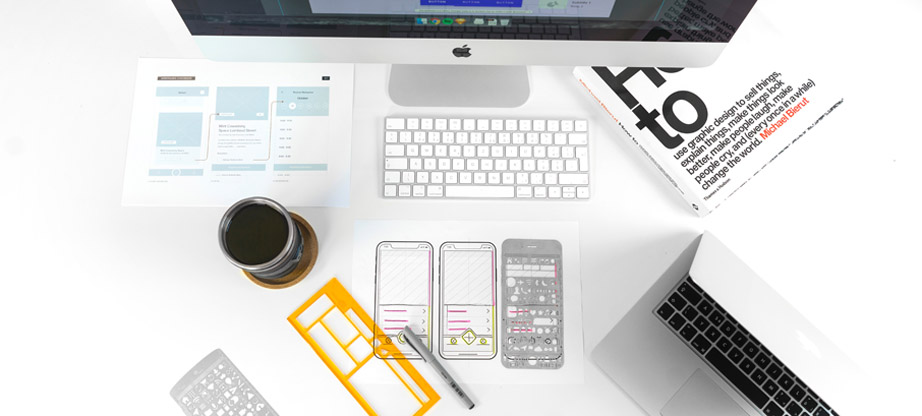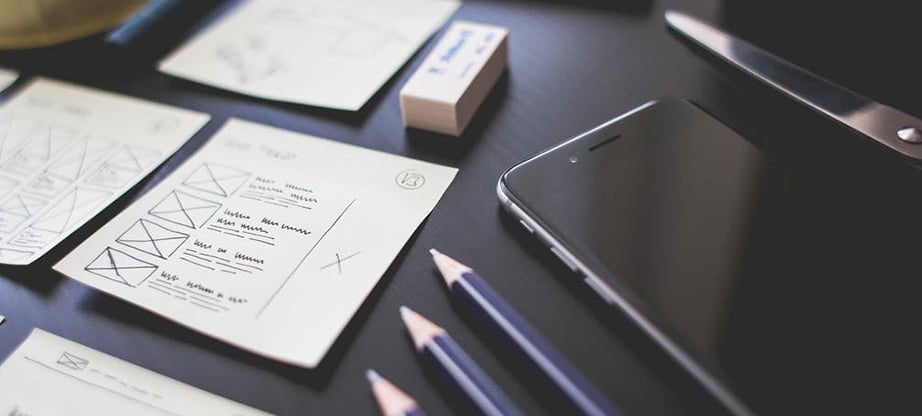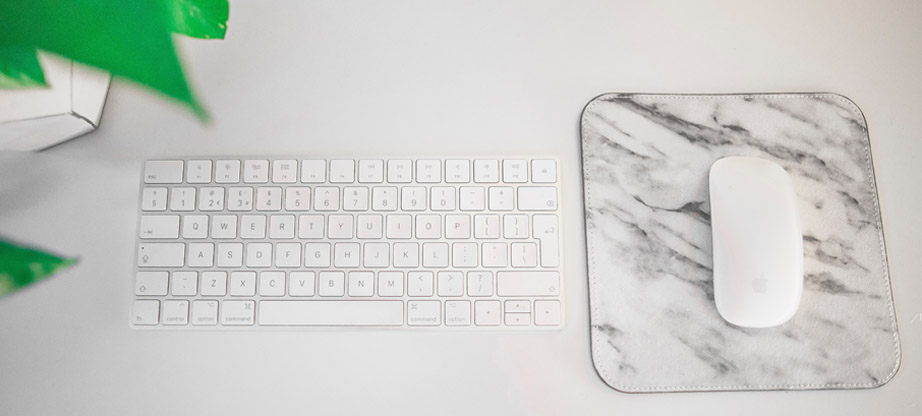UX Design Books – 10 Must-Read Ones
For every trying or expert UX designer out there, as well as those who want to strive online, there’s a lot to learn before you master this process. Books are your biggest and fairest friend. So, if you want to improve your bad UX skills and stop making poor choices, you need the boost what experiences can give. And what better way to learn about experiences than from the written words of those who lived them? These are UX design books.
“UX design is an essential skill for any designer, and it doesn’t just serve in the goal of creating websites and apps. UX design is so much more. If you want your website or app to succeed, you can’t make it happen without it. People won’t choose, use or buy things they don’t enjoy or like.” – says Angel Pierce, writer at BrillAssignment.
To turn into a brand, you need the power of UX design books to help you. This can be intimidating, but reading through our list of best design thinking books should make a whole lot of a difference in your path toward becoming a great UX designer.
The Design of Everyday Things
The first in our list of UX design books is the one you’ll probably find on any great designer’s bookshelf. It is the starting point and the boost for every aspiring designer, a guide that covers the basics, use, and understandings of the UX design.
Anyone who is attempting to design something that people will use must put their hands on this book. People say that it changes the perspective and helps designers interact with others better, as well as persevere the poor design and avoid bad choices.
The author of this book speaks of the ‘Norman door’. This door represents the specific moment when people pull a door instead of pushing it, usually resulting from poor design.
The book was first published under a different name, The Psychology of Everyday Things. Ever since it has been edited and republished several times, but Norman’s ideas and perception of human experience have remained of the highest value for those who read it.
In the book, Norman uses cognitive science to explore the psychology of people and objects. That makes it even more crucial for designers to use more user-centered approaches in their designs. Norman uses case studies which illustrate the difficulties of designing something perfectly. The importance of good design has on the success of its designer.
Even though it was published back in 1982, it remains one of the highest praised user experience books even today.
Solving Product Design Exercises: Questions and Answers
The second in our list of user experience books is the masterpiece by Artiom Dashinsky. This is a more recent book, but already a trend among UX and UI designers. Its purpose is to prepare designers for interviews and their future design roles in digital, tech companies. It teaches the basics, as well as the tricks for mastering design, and the importance of doing it right.
Dashinsky’s book talks of popular companies like Google, Facebook, and Amazon, who look for focused designers that know more than just the visual. Their ideal candidates are the ones with the ability to use visuals, but also solve various business problems. It explores your preparedness for a take-home designing exercise or an unannounced whiteboarding session, which as you know already, are common with designers. On top of that, the book includes advice for any designer from some of the highly successful designers and leaders who worked in those huge companies.
This one is perhaps the most diverse in our list of best design thinking books. It captures many aspects and ideas found in the UX design world. The author who’s a former senior product designer at the company WeWork says that schools for design don’t teach people the mindset. The transparency in the top design businesses is too low for you to know what they actually need. He takes more of a holistic view for solving UX and UI design problems, such as health, equality, and sustainability.
UX Design Books: Usable Usability
Eric Reiss enjoys all the popularity one can get among fellow designers. He is a world-renowned expert in the area and the writer of ‘Usable Usability’. A book will help you get one huge step forward a great UX career.
In his book, Reiss explains usability and its importance, as well as provides tips on how to do this. The third one in our list of UX design books is divided into two: ‘Ease of Use’ and ‘Elegance and Clarity’. These two parts of the guide are full of real-life examples with an engaging and inspiring tone. It’s perfect for fresh and current designers in the UX field.
Reiss is an honored expert at FatDux, an UX design company in Copenhagen. Not so long ago, he took the role of a Professor of Usability and Design in the Master of Digital Marketing Program in Madrid. Right there in the introduction, the author talks about the knowledge he shared in this program.
The goal of the third of the user experience books in this list is to show two sides – the sides of the coin that is usability. The ‘Ease of Use’ is the side that does what people want it to do. The ‘Elegance and Clarity’ is the side that does what people expect it to do.
When you start reading a book, you’ll find yourself in its psychology. This is common psychology in all people, one where usability has both sides, even if one of them is more subconscious than the other.
Smashing UX Design
The UX Directors from CX partners joined forces with the Smashing Magazine and published one of the top UX design books you can find – ”Smashing UX Design”. It’s a book specifically aimed at developers and web designers, and an authoritative masterpiece from experts in this field.
This book has four parts. The first one overviews the user experience. The second one researches and evaluates the user experience. The third one speaks of techniques and tools for the designing process. Lastly, the fourth one explains the design components of UX in detail.
It is a very detailed, diverse UX design manual that’s raised tremendous interest among designers. It has an understandable and concise style, making it a perfect read for everyone, including those with little experience in UX design.
If you wish to master the UX design, this is an ideal resource. It takes a high spot in our list of UX design books because of its sixteen UX design research techniques and tools readers can use for their projects. In the pages of the book, you will find some highly useful tips from experts who’ve worked in the UX industry for a collective 30 years. These tips come in the form of guides for using the techniques, testing, wireframing, information architecture, prototyping, sketching, etc.
The Smashing UX Design book also includes case studies from projects that explain the techniques and their usage, checklists to select the most effective techniques for a particular project.
UX Design Books: Process and Guidelines for Ensuring a Quality User Experience
The title of this book choice in our list of best design thinking books isn’t the only thing that is detailed. This book is as lengthy and detailed as it goes. However, it makes for a very effective read if you want to become a better UX designer. All of its many pages combine great technology and UX design knowledge. So you might want to spend the time to get to its very last page.
Regardless of your experience level, you should read this book by Harston and Pardha. Their approach to human-computer interaction theory and UX design is refreshing and quite broad, combined with many practical and effective techniques.
This lengthy read will surely boost your designing skills. It combines UX techniques for evaluations, design, and prototyping. Its authors guide readers through design creation and ideation, requirements extraction, and practical design production.
In 2013, the UX Book was the winner of the Most Promising New Textbook Award from the Association of Text and Academic Authors. It is known for its practical applications, as well as the breadth of actionable techniques with some grounding in HCI theory and concepts.
Choosing this piece from our UX design books list will give you access to guidelines for processes and principles of UX, as well as guidelines for devices and interaction. It also includes some inspiring real-world contributions and stories from expert UX designers.
Design for Real Life
The authors of ‘Design for Real Life’ have used a different approach – examples from services and sites that help designers improve their UX techniques. It is one of the best design thinking books for a reason. It gives you tricks you can instantly implement into your work and achieve results.
You’ll be surprised to see the realistic approach and honesty of Sara and Eric. They speak of UX designing as something that is not universal or accepted by all. They acknowledge that it is impossible to please everyone with a single design. However, they provide tips for making your design as likable as it can be.
The book is based on the harsh truth we all know but don’t talk about. You can’t look inside the minds of every user and create the perfect design for them. The honesty in it is refreshing. The authors speak of our inability to predict who will select our design and who will reject it. However, they also speak of designing with help of compassion and techniques to attract more users.
In addition to using their experience, Sara and Eric use examples from over a dozen services and sites into instant principles you can use right away. This is a great book for everyone who wants to learn more about UX design.
Don’t Make Me Think, Revisited: A Common Sense Approach to Web Usability
The next in our UX design books list is ‘Don’t Make Me Think’. First published back in 2000, this book has helped hundreds of thousands of designers and developers. They sell Krug’s guide on UX design in over 400,000 so far, and the number is growing.
Why wouldn’t it? This has proved to be the perfect book for all who want to learn more about information design and intuitive navigation, its principles, and techniques. Krug has published his third edition of the book with a fresh perspective that somewhat reexamines the principles of UX design. It is what made this book a classic and a bestseller among designers worldwide.
The book might be short, but it is enriched with a new mobile usability chapter and many new examples. Like the previous editions, it is well-illustrated and perfectly fun as well as informative to read.
When designers create for the web, they think of an ideal user, a user persona. This is a person who sits calmly in front of his screen and has all the time in the world. It is the ideal user. With that user in mind, designers simply expect that people will be instantly accepting and welcoming their design.
This book tells you the truth – nothing about UX design is simple.
It speaks of actual designing, no strings attached. Designing for real life requires getting rid of all those opinions of the ideal user and customers. The author shows designers how to examine these biases and better understand the target user.
100 Things Every Designer Needs to Know About People
According to Weinschenk, UX is all about the people. The author of this book is a behavioral psychologist with tremendous experience in UX writing. More specifically, she’s been one in the 1980s. So that’s as much of a UX expert as you can get. Naturally, the book of this expert has gotten its place in our list of top user experience books.
This book speaks of 100 things, making it quite versatile and very informative. It shares tips about the font that people read, ideal line length, common errors people make, etc. Through the use of research and science, the author answers all the questions you might have had about UX design. They make it perfect for literally everyone, including those who are new to UX design.
After publishing this successful book, Weinschenk published a sequel ‘100 More Things’, and another one called ‘Neuro Web Design: What Makes Them Click’. However, these aren’t quite made to be read continuously, so you can start with one and see how you like it.
On every two or three pages, you’ll find a new chapter. All of this makes for an easy, yet highly helpful reading.
By reading this book, you will learn how people see and ‘recognize their environment. Then, you will learn how they read and what they prefer while doing so. Later follows how people think and process information, which should help you spread your information and create the design in the most accepted form.
And finally, there’s the matter of what motivates people, more specifically motivation by mastery, progress, and control.
Susan’s book is light reading, making it a must-have book for your list even if you have limited time. It might be short, but it is definitely full of gems. One hundred of them to be precise.
UX Design Books: Thinking, Fast and Slow
Well, this book in our UX design books list isn’t strictly a book for UX design, but it is definitely a smart read. Learning about how people think and make decisions, as well as behave in a given situation should tell you a lot about how you should attract the right audience.
The ideas in this book will certainly open up your mind to endless UX design possibilities. It’s no wonder – the book is written by a Nobel Prize winner. Daniel Kahneman won the economic science Nobel back in 2002. This was an unusual win due to the fact that the author of this book is actually a psychologist.
What you’ll read in this marvelous book is how irrational humans can be. ‘Thinking, fast and slow’ is profound and lucid, as well as extremely entertaining. In fact, it is so enlightening that David Brooks from New York Time declared that it ‘will be remembered hundreds of years from now’.
All that fame around this book makes this an obvious choice to read, doesn’t it?
Lean UX: Applying Lean Principles to Improve User Experience
Finally, the last one on our UX design books list is the Lean UX book, one that helps you find the perfect strategy that will define your role within a given company. This book is different from the rest in the list in the sense that it explores user behaviors through testing and research. It also helps you base your decisions on the findings.
It is a great guide that will help you survive in the competitive business world. In it, Gothelf explains how you can do your projects in a collaborative manner, as well as solve the user problems without creating new ones. The reading might get quite chunky. So you might want to get rid of all distractions to get the best out of it.
Final Words – UX Design Books
User experience designers are surrounded by many buzzwords such as flat design, no UI, skeuomorphism, etc. Lean UX probably falls in the same category. However, the book by these two authors convinces you that such buzzwords can actually be very valuable to those who wish to understand the UX industry better.
The book tells the truth about the work of most UX designers – lean. We obviously understand how important moving towards is. But desperately we need a change in our design approaches. It’s what the book is all about – how to fix the faults and get the best out of UX design.
For this purpose, the greatest tool the book offers you is collaboration. They don’t just tell you to work with others but detail a lot of practical tricks and techniques for collaboration. Some case studies that demonstrate their effect in real-life situations.
Did you find what you’ve been looking for? These books are on the list for a reason. They have helped thousands of UX designers to fulfill their goals and learning to create the most attractive designs for their audience. Start from any book you like and move forward. As you come to the end of the list, you will be enriched with excellent techniques and knowledge. They will aid you in creating the most promising UX design you could have ever imagined.












